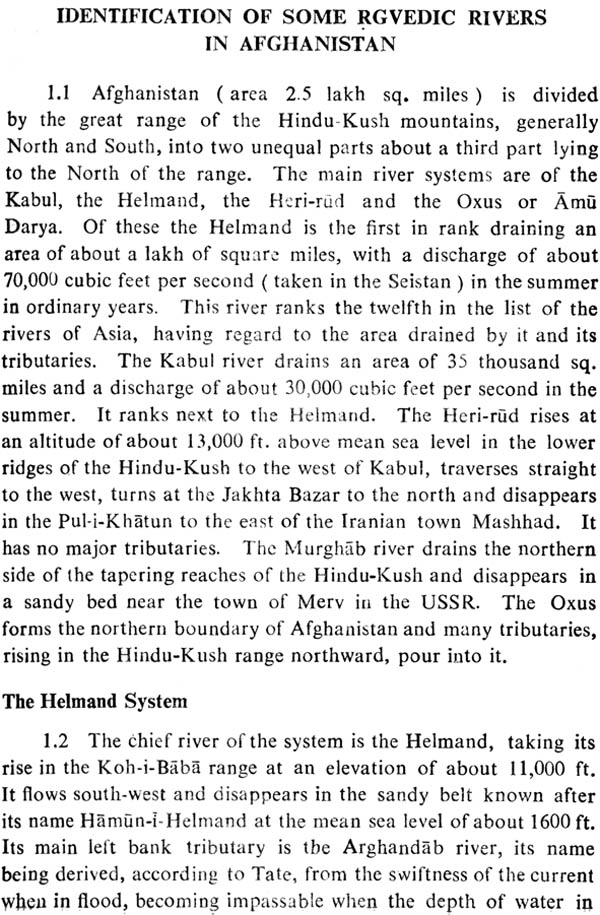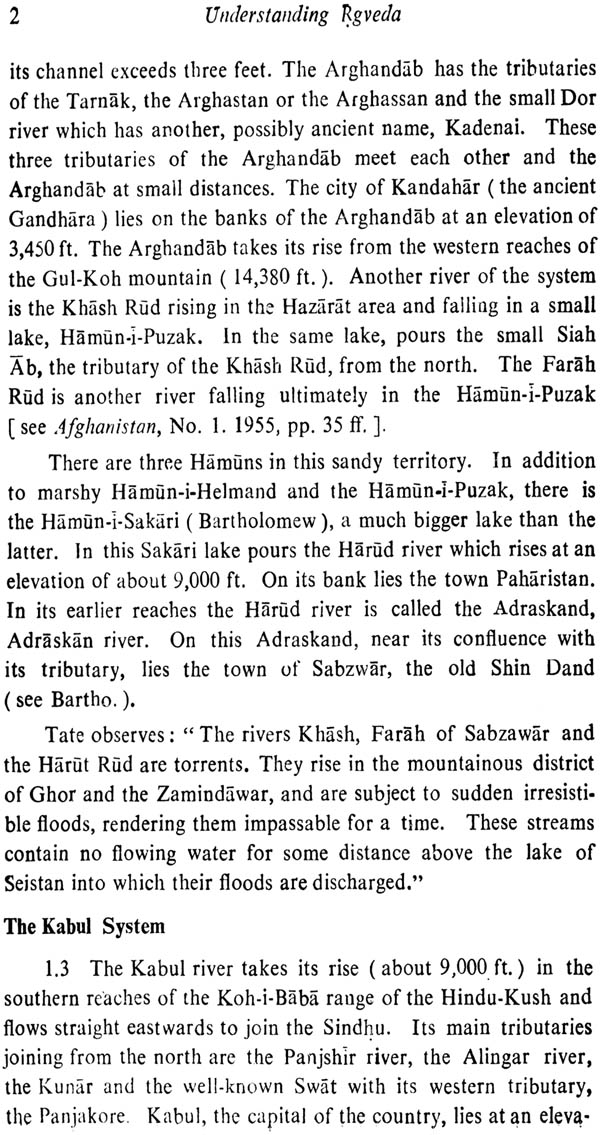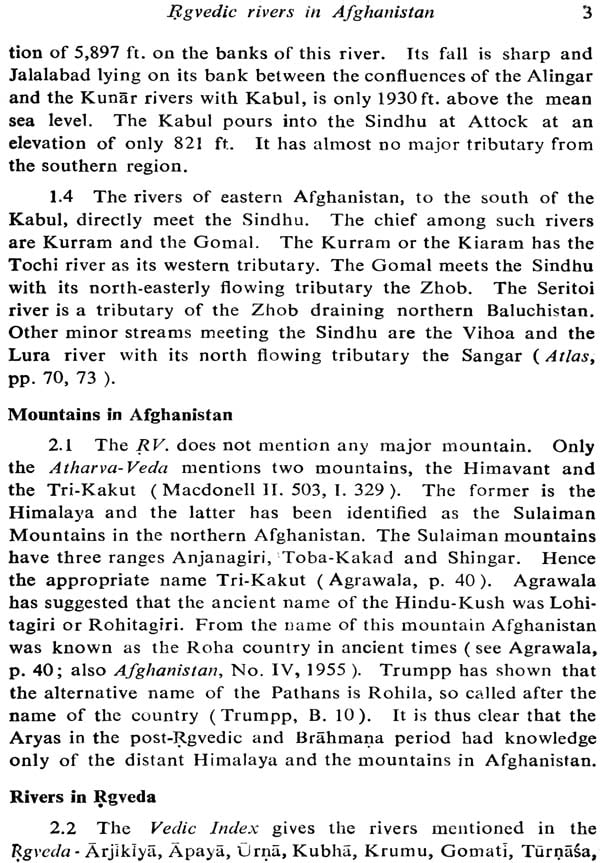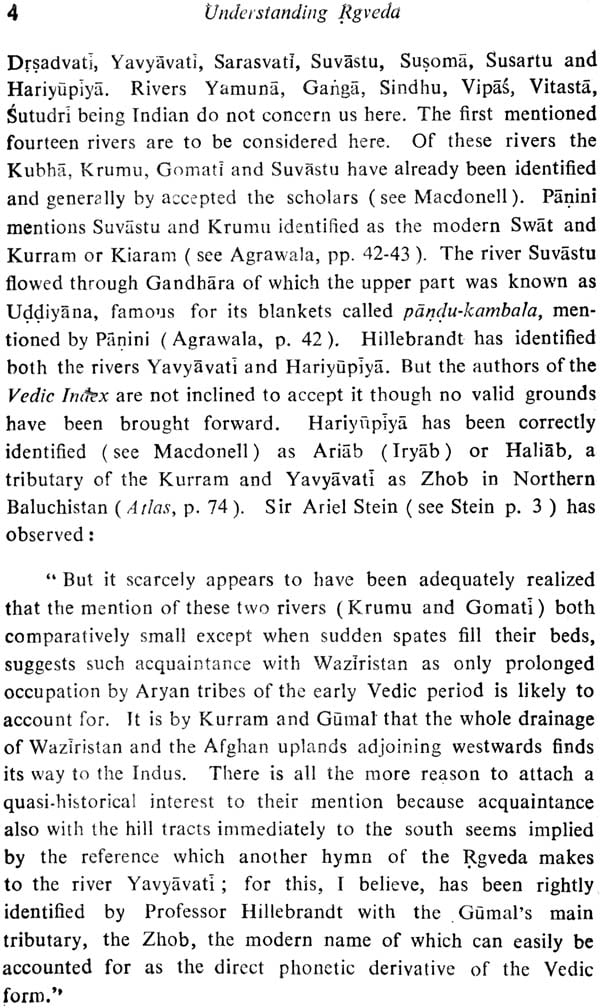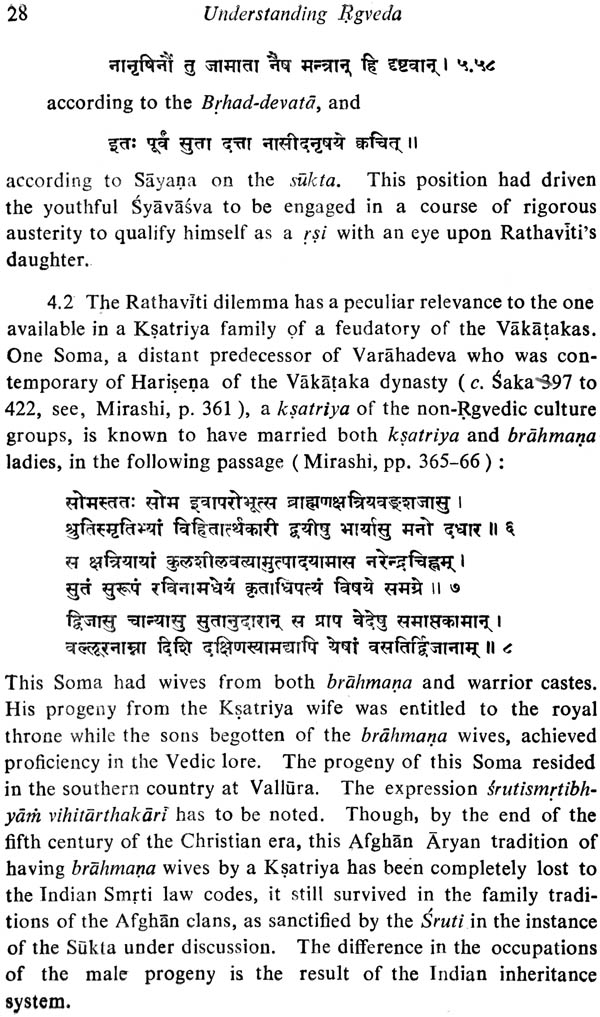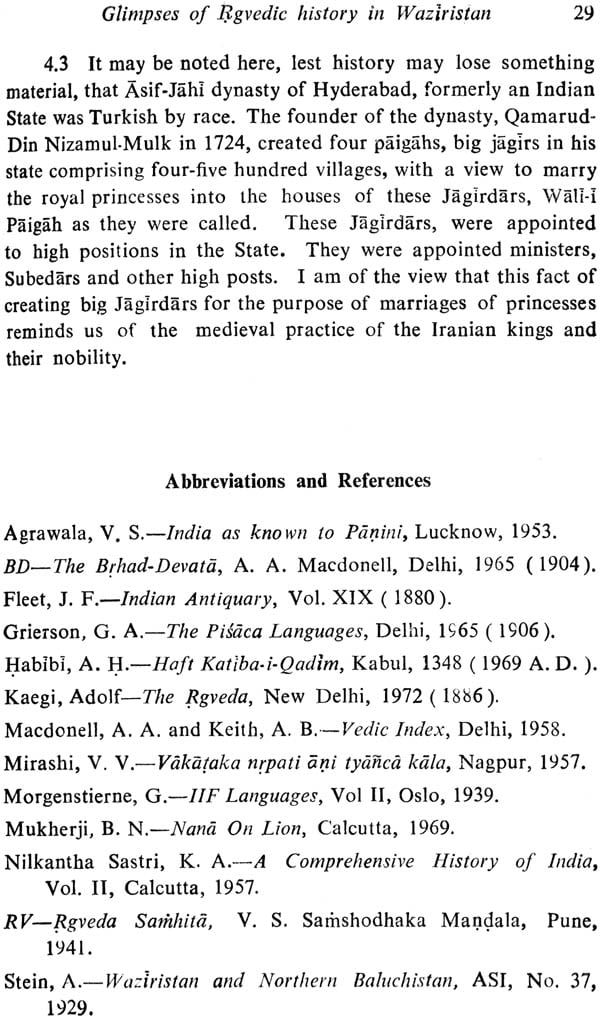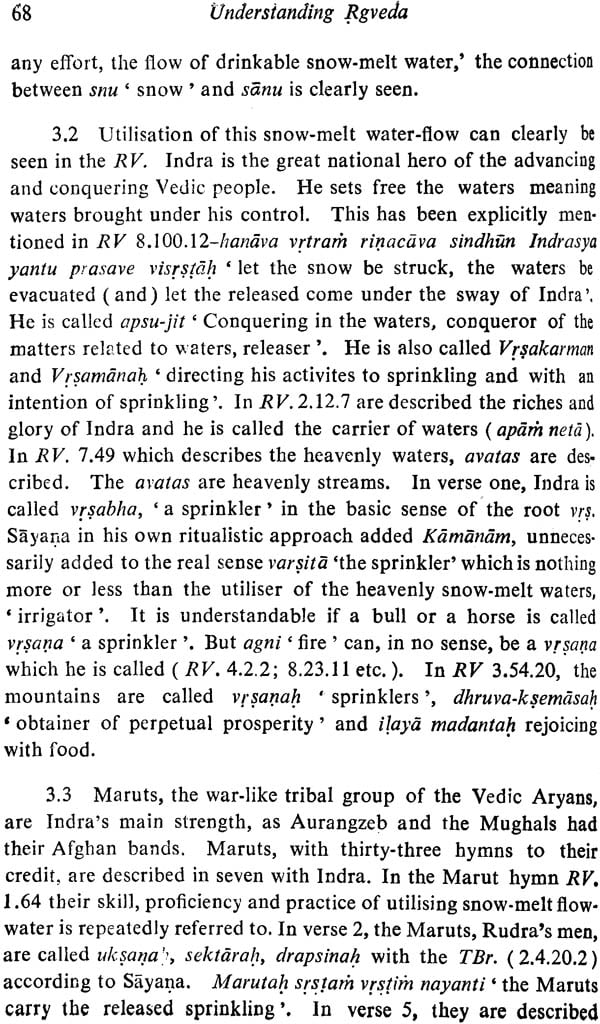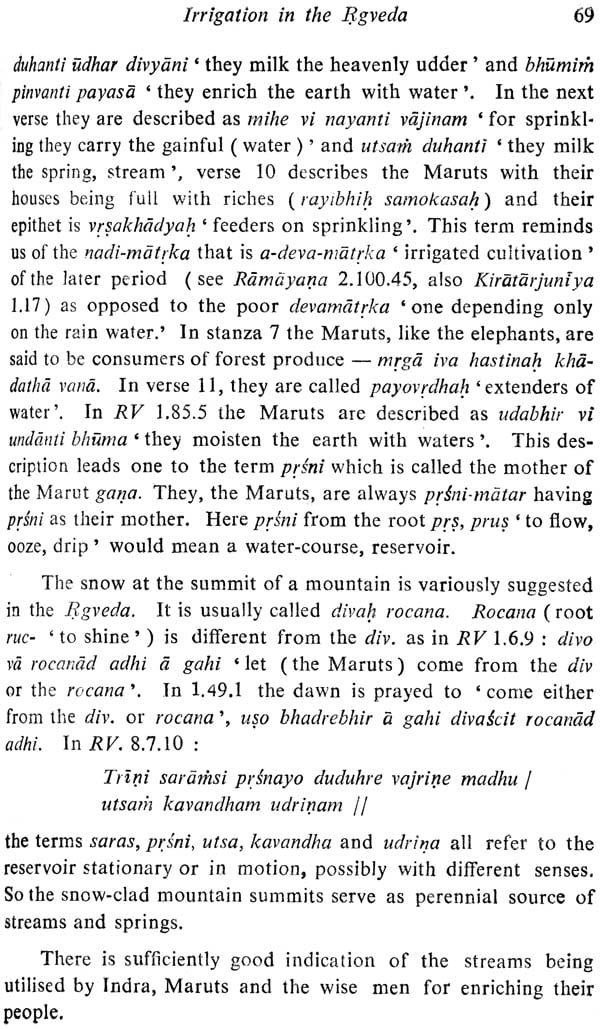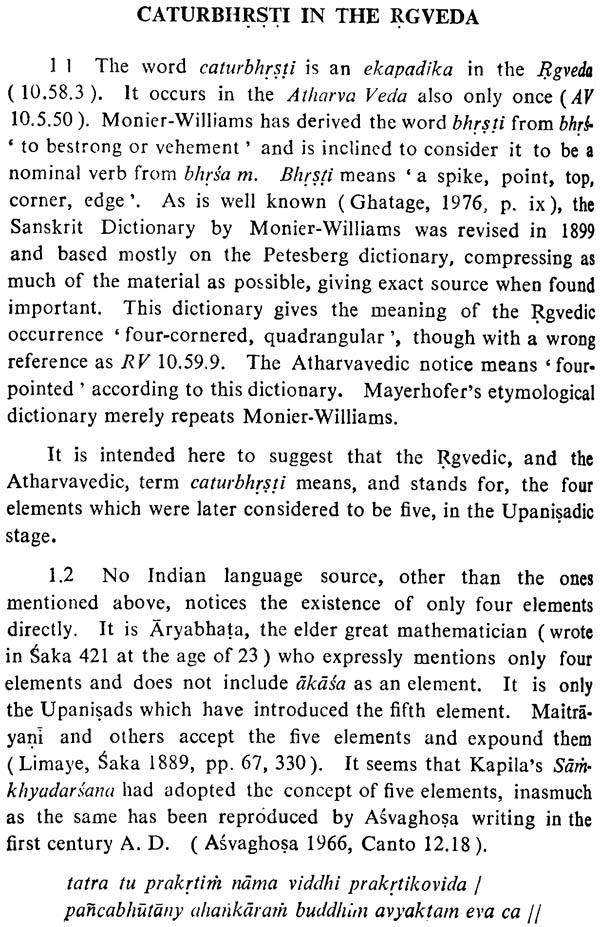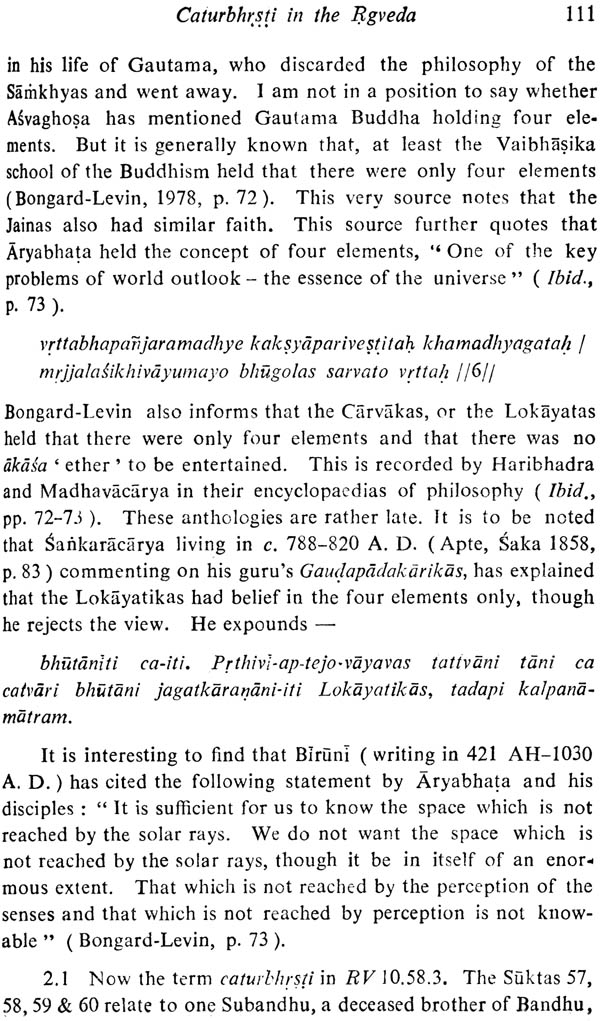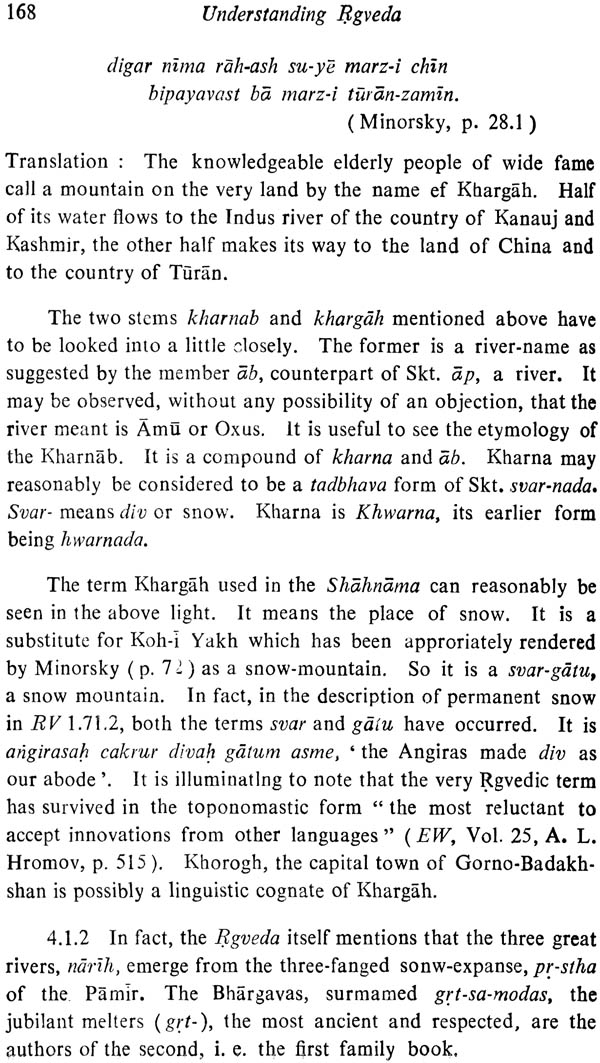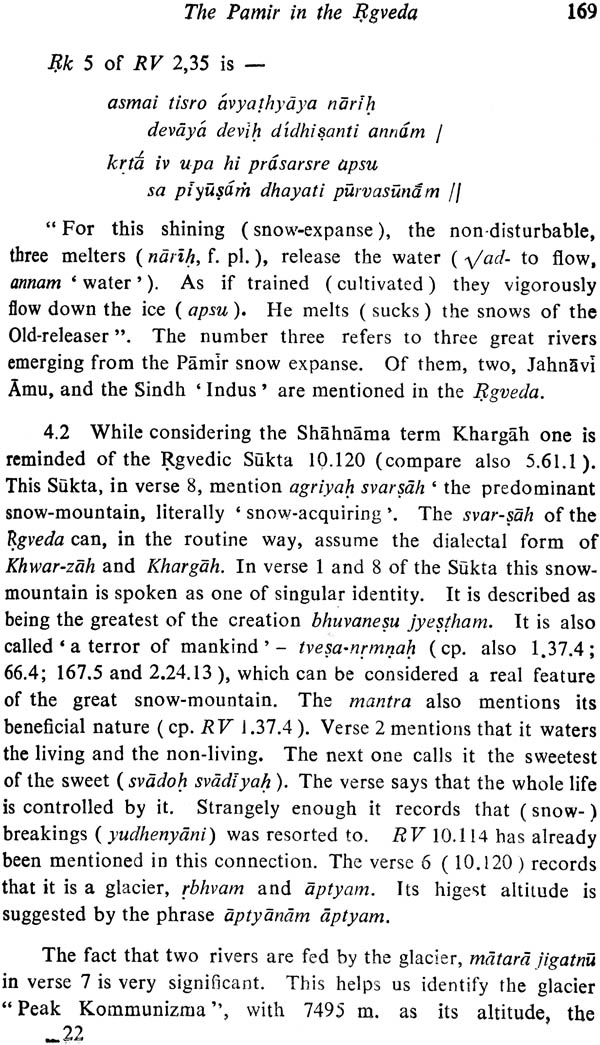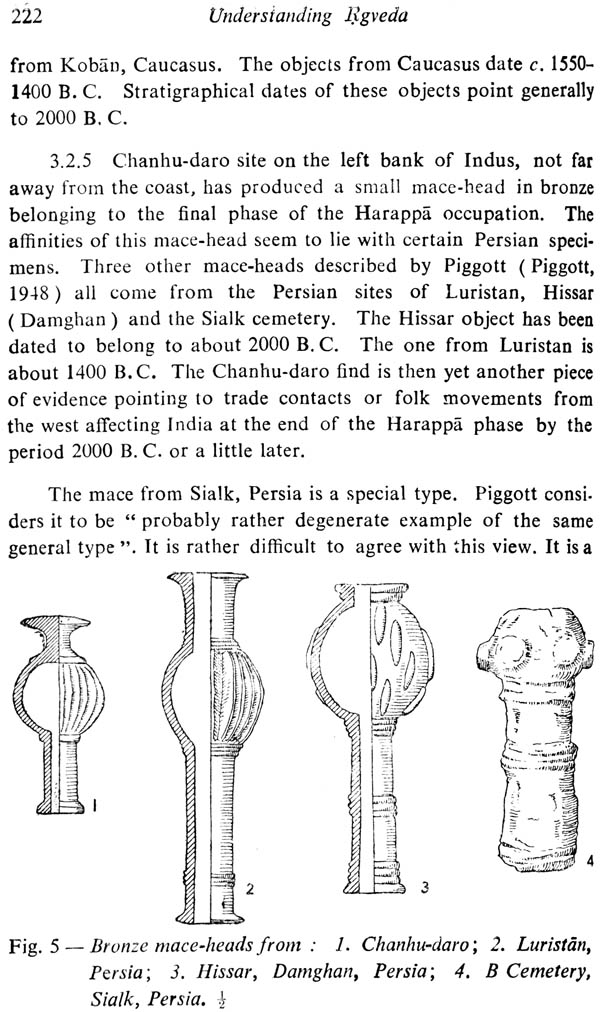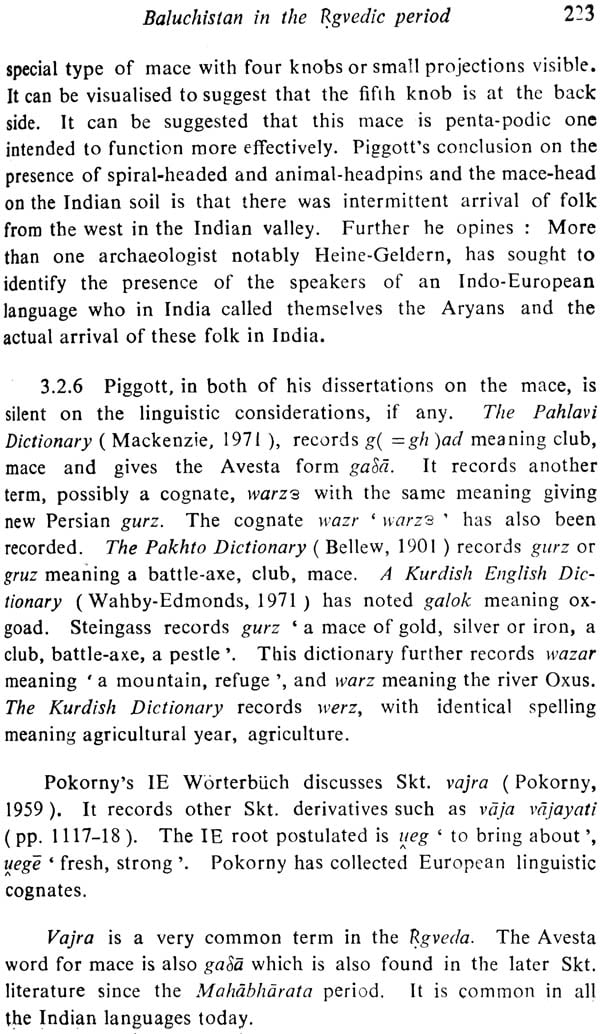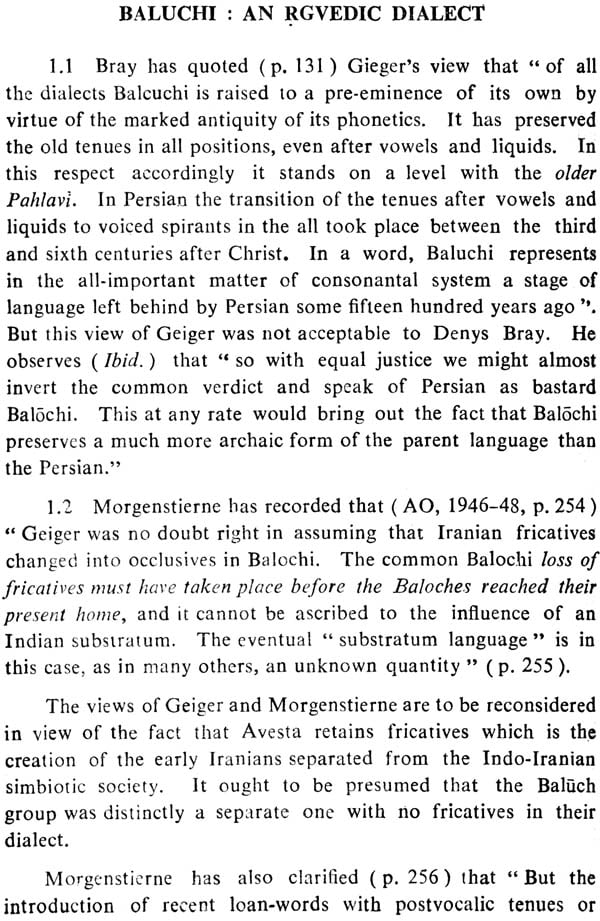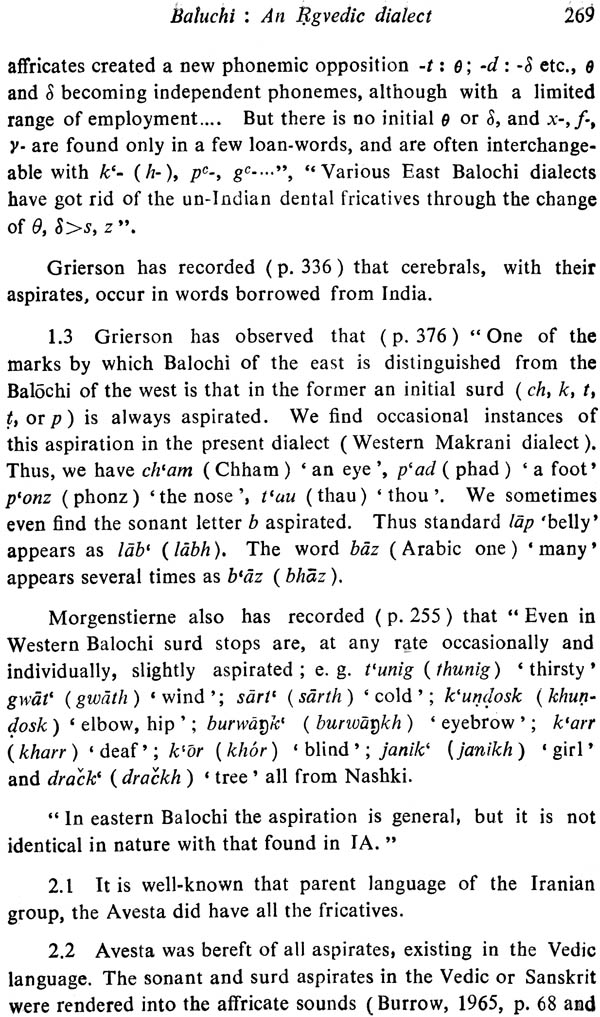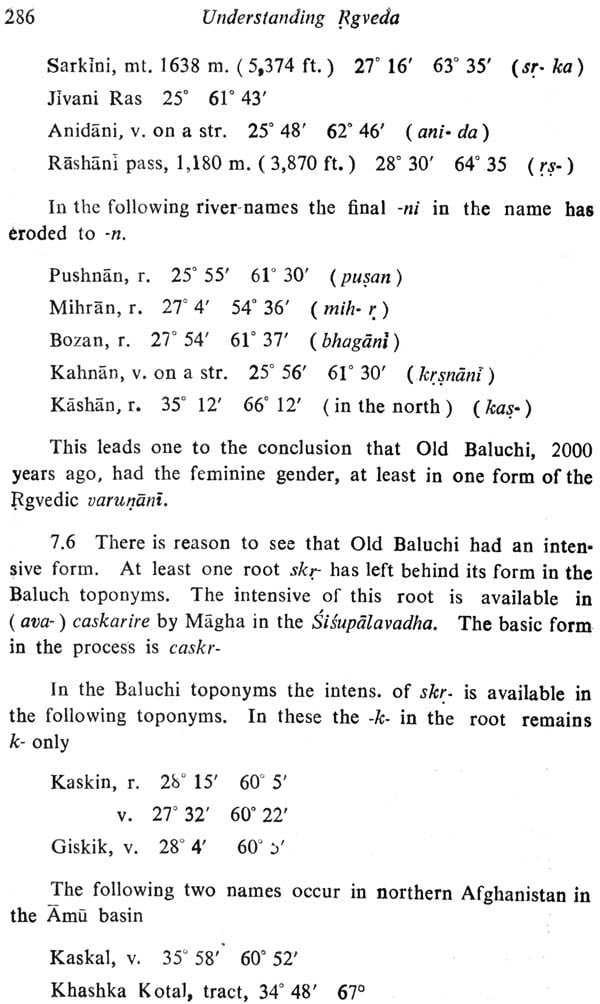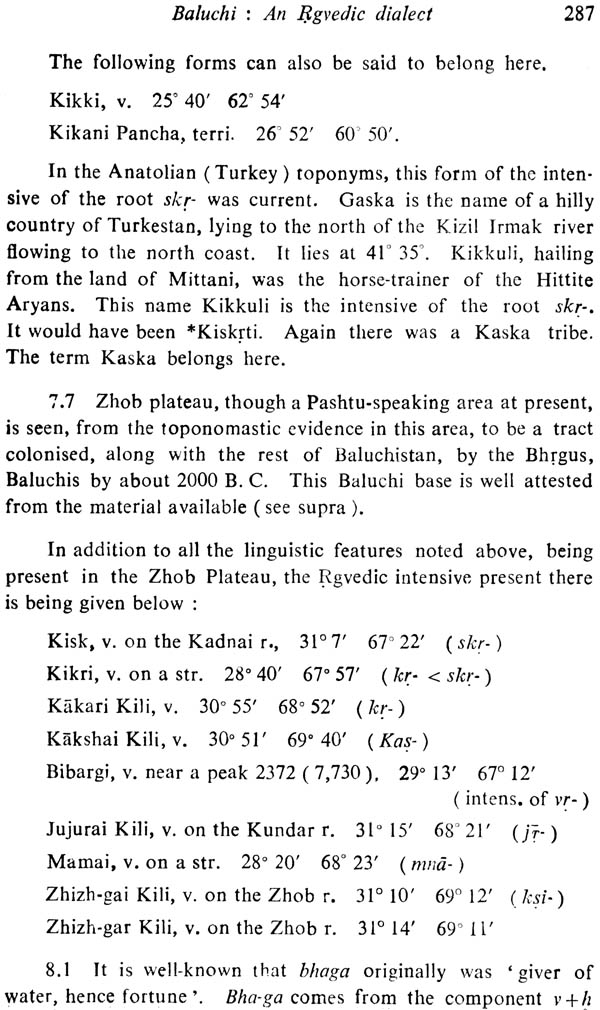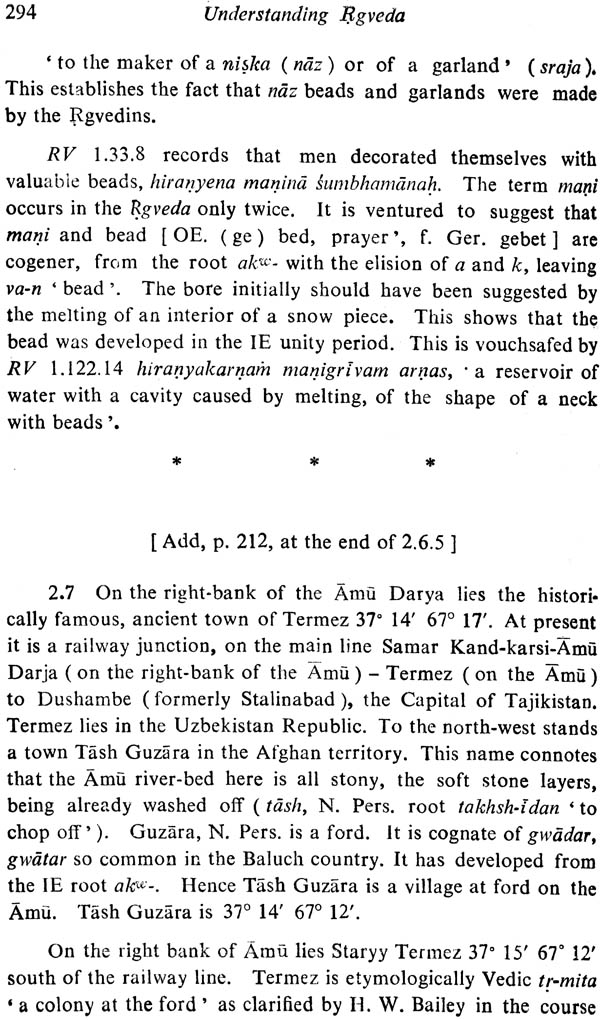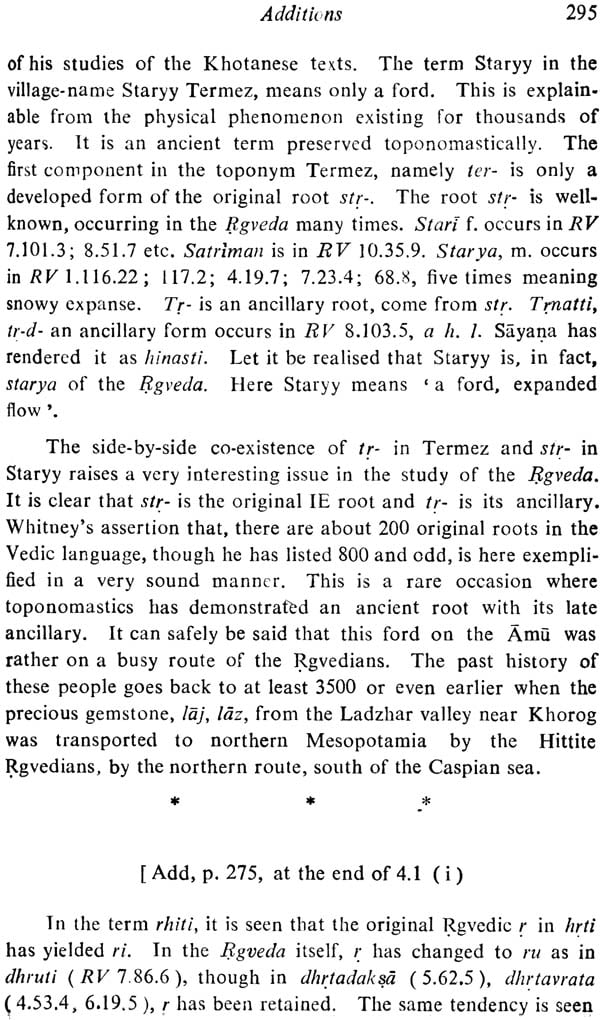
Understanding Rgveda (An Old and Rare Book)
Book Specification
| Item Code: | NAK055 |
| Author: | D. V. Chauhan |
| Publisher: | Bhandarkar Oriental Research Institute, Pune |
| Language: | English |
| Edition: | 1985 |
| Pages: | 366 |
| Cover: | Hardcover |
| Other Details | 9.0 inch x 6.0 inch |
| Weight | 540 gm |
Book Description
One of the most significant features of Orientology in recent times has been an in-depth culture – historical study of the Central Asian region comprising Balkh, Hindukush, Pamir, Tadzhik, North Afghanistan, etc. No doubt, as early as in 1904, there was published O. Olufen's book Through the Unknown Pamirs: The second Danish Pamir expedition 1898 – 99, which contained a veritable mine of highly suggestive information regarding particularly the religion and superstitions then prevalent in the higher reaches of the Amu Darya (Ishkashim, Wakhan). One may also mention two similar books published earlier: J. Wood's A Journey to the Source of the River Oxus (1872) and G. Roberson's The Kafirs of the Hindukush (1896). But it was during the last forty years or so that considerable academically scientific work in this disciple newas accomplished through their diligent researches by scholars like Morgenstierne (to Whom the present monograph is very appropriately dedicated), Bailey, Jettmar, Snesarev, and Edelman. A reference may also be made in this connection to the International Symposium on "Ethnic problems of the ancient history of Central Asia (second millennium B.C.)" help at Dushanbe in October 1977 where the whole subject of Ancient Central Asia was thoroughly dealt with from the archaeological, ethnic, linguistic, and religio-historical points of view.
It has now been more or less convincingly shown that even the present-day dialects and religious beliefs and practices of the tribes inhabiting the region of Balkh, Hindukush, pamir, Afghanistan, etc. (like the Kafirs and the Dards)bear close affinities to the language and religion of the Rgveda. These communities have succeeded in scrupulously preserving to this day their archaic indo-Iranian or Aryan roots despite being pressurised on all sides by alien linguistic and religious elements. This supports my own contention that it was verily in this region that the Aryan language and religion received their first distinct major migrations took place – one of the ancestors of ancient Vedic Aryans towards Saptasindhu. In a sense, we may even speak of the Rgveda having been born in this region.
It is needless to add that a comprehensive culture-historical study of this Central Asian region is bound to help the understanding of the Rgveda quite substantially. Unfortunately Indian scholars have almost totally neglected this aspect of the study of the Rgveda. Shri D.V Chauhan's present monograph is a welcome departure from this trend. One may not agree with everything that Shri Chauhan has to say – indeed this is not expected of a book of this kind – but I heartily sponsor this effort of his because it admirably serves to draw the pointed attention of the students of the Rgveda to a valuable line of research.
I was a professional politician up to 1964 having been an agitator in the Freedom Struggle, a satyagrahi, a minister, and a member of the Maharashtra Public Service Commission. For some years I wandered in the realm of ancient history, especially relating to the Indo-Iranian contacts as ancient history, especially relating to the Indo Iranian contacts as reflected in epigraphy and old languages.
Though maz (niska) and naznin (a Beauty ) have to be sought in youth, I, having squandered it like Saikh sadi or Bana-bhatta, am, for the last 15 years in the company of the Rgveda. Being a materialist and a student of mathematics, my approach in studied has been historical, to go in for facts.
"The Polar attributes of the Vedic deities" have been sought in svaiteyas of the Prstha – mitra. i. e. The Pamirs in the second Urheimat of the Aryan people. It has been realised that Indra, Mitra, Varuna Visnu, Aryaman, Nasatyau Pusan Rudra etc. Are only forms of Agni or Suryaa.
Identification of the Urnavati which is kinara with the Kunar river or of Drsadvati with Adraskan or Harud in Afghanistan is the result, Identification of Rgvedic niska with naz, laj, laz, of the Munjan and Khorog mines with lazuli-r, is, I think, sound. Lazuli with its presence in north Mesopotamia in 3500 B.C. provides, firstly, the date of the Hittites in Anatolian Bogo-zkoy (Bogo-zkale) and, secondly evidence for the niska industry in the two centres of Badakhshan. This speaks for the presence of the Rgvedians at pamir and Hindukush by c 4000 B.C. Niska industrial base at Shahr-i Sokhta and Mundigak by c 3000 B.C. explains the mention of the Drsadvati, an insignificant stream, but useful to designate the area-complex of mighty sarasvati of the Rgvedians.
The study of Bhrgu, Baluch, Birg mountains; Baskala, Mashkel, Makran and Bashkardi, Gvatar, Gvadar and Gedrosia (the land of gvatars, N. of the ancient Baluchistan) and RHITI-Mashkel, the vinasana, only paraphrased by the great manu, would, it is hoped, be of prime significance in the Aryan expansion. This country can be of prime significance in the Aryan expansion. This country can be visualised to be the first Bharat, the original one so designated by Kausiks, Visvamitra, the Hundian of the Baluch people.
The Zhob plateau, though ar present only a Pashto tract, but having the Rgvedic toponomastic base, anterior to the Pahlavi and Iranian encroachment in the wake of political upheavals, is of great historical importance. It is significant that Zhob had only Nushk, Nuhkam base, lazul being unknown in the area. This brings to light the Niska route from Mundigak to Harappa and the Indus basin.
The late Acarya VIsnu Prabhakara Limaye (Born April 28, 1900 – departed March 28, 1984), a Paninist, a Rgvedist, a real vidyadhana and a sammana-udvejita , was kind enough to peruse most of the material in this book and to make many valuable corrections and suggestions.
Professor R.N.Dandekar, internationally well known Indo-logist and versatile Sanskrit scholar particularly in the field of Vedic studies, encouraged me to publish this book. My deep gratitude to him.
My thanks are due to Shri V.L. Manjul the obliging and friendly librarian of the BORI, who got me, with special efforts many rare reference books, to shri A.N. Gokhaley, who saw through the complicated proofs with keen scrupulousness and helped me in preparing all the Indexes, to Shri B.N. Paranjpe for all his willing help, and care in the task of printing.
| 1 | Identification of some Rgvedic rivers in Afghanistan | 1 |
| 2 | Glimpses of Rgvedic history in Waziristan | 16 |
| 3 | Hamun and Jawal | 30 |
| 4 | Lawikan-i Ghazna | 40 |
| 5 | Rgvedic element in the Ghalchah languages | 49 |
| 6 | Irrigation in the Rgveda | 63 |
| 7 | Rta, Sabardugha and Aka in the Rgveda | 75 |
| 8 | Nirrti in the Rgveda | 88 |
| 9 | The Yak in the Rgveda | 101 |
| 10 | Caturbhrsti in the Rgveda | 110 |
| 11 | Parusni is hte Prasun in Kafiristan | 117 |
| 12 | Inso-Iranian conjunctive participle | 128 |
| 13 | Ravedic Kasi and Svin-giri | 149 |
| 14 | The Pamir in the Rgveda | 160 |
| 15 | Jahnavi and its environs | 174 |
| 16 | The Amu and its heritage | 198 |
| 17 | Baluchistan in the Rgvedic period | 215 |
| 18 | Weapons in the Rgveda | 243 |
| 19 | Rgvedic element in the Anatolian Toponymy | 258 |
| 20 | Baluchi : an Rgvedic dialect | 268 |
| Index I : | indo-European words | 297 |
| Index II : | Indo-Aryan words | 300 |
| Index III : | Baluch words | 315 |
| Index IV : | Iranian words | 319 |
| Index V : | General | 331 |
